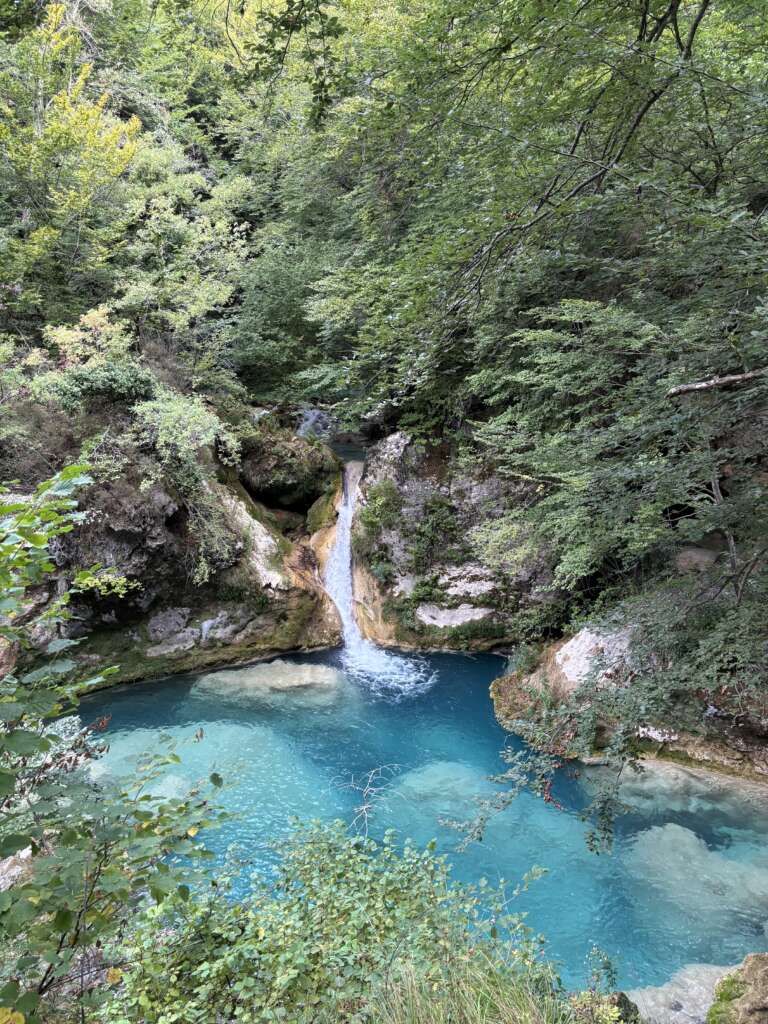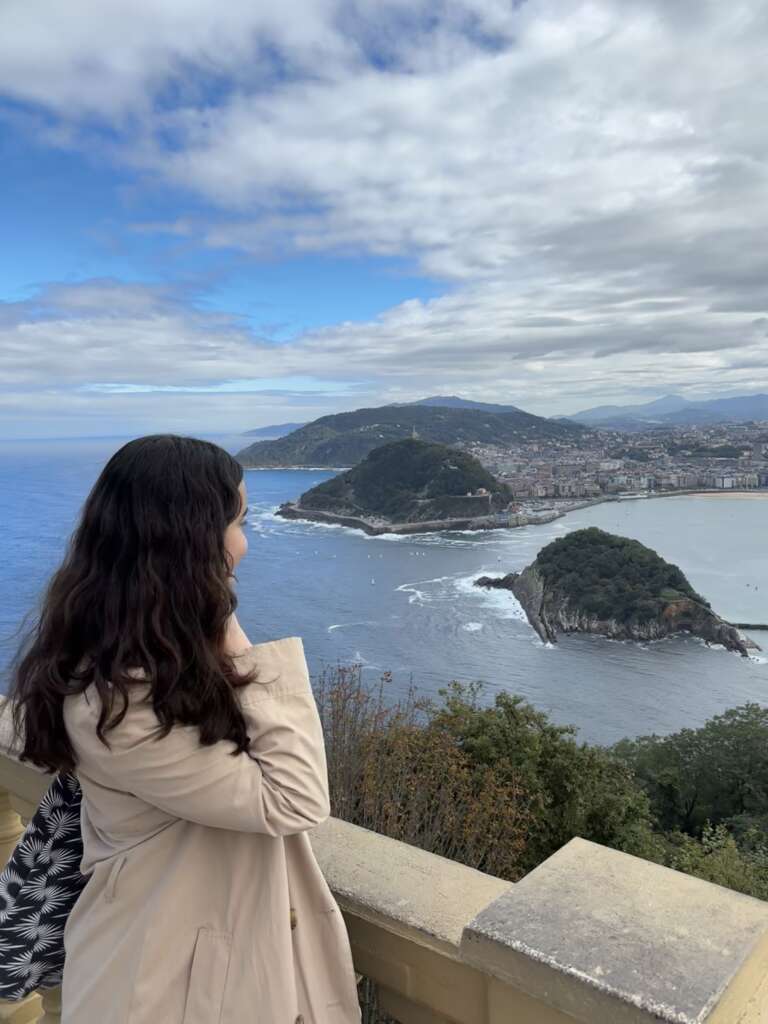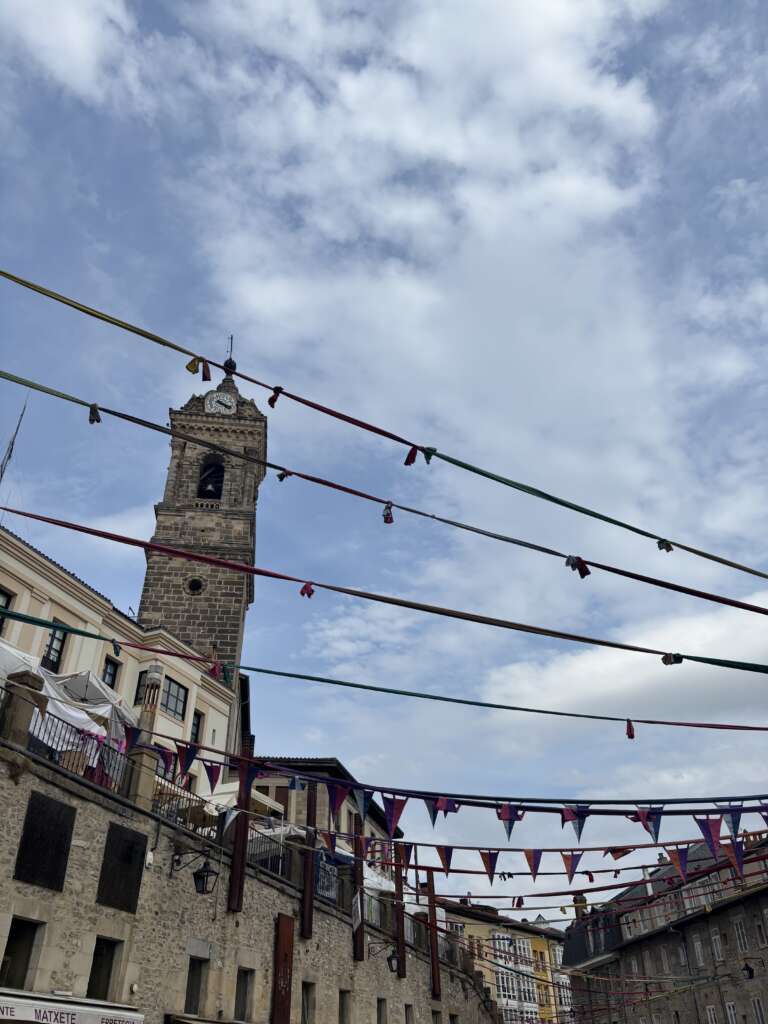When people talk about Spain, they usually mention Southern Spanish beaches and popular cities like Barcelona or Madrid. This is why when I was first placed in Pamplona, the capital city of the province of Navarra, I knew little about the unique history and culture of Northern Spain, which sparked my journey of exploring the Spanish Basque Country.
While Pamplona is not often considered part of the modern-day País Vasco, which stretches across the north of both Spain and France, this small city, best known for San Fermín, its yearly running of the bulls festival, has strong ties to the ancient Basque culture. The red, white, and green flag of the Basque Country (known as Ikurriña) can be spotted all over the city, and street signs are written in both Spanish and Euskera, the Basque language, believed to be the oldest language in Europe.

The importance of Euskera also stood out to me when exploring the rest of Navarra. For example, one of the most popular trips in the province is to a forest called Urederra, a Basque name translating to “beautiful water”. Urederra’s crystal blue pools are just one example of the natural beauty, hikes, and sights that characterise the greater Basque Country.

If you’ve heard of País Vasco, you’ve likely stumbled across pictures of the beaches of Donostia or San Sebastián, a city in Navarra’s bordering province, Gipuzkoa. San Sebastián was made famous by decades of interest from Spanish royalty and international celebrities. This city not only offers the best Basque cheesecake but also breathtaking views of the Bay of Biscay that runs along the coast of the Basque Country.

Similarly to Pamplona, in San Sebastián you will notice typical symbols of Basque culture, such as the lauburu (also known as the Basque Cross) and dried sunflowers known as eguzkilore, placed above the front doors of people’s homes to protect against bad spirits.
These symbols filled souvenir shops when I visited Vitoria-Gasteiz, the capital city of the Basque Country that houses the Basque government and is situated in the Spanish province of Álava. I visited Vitoria when the ancient city was fittingly celebrating a Medieval festival. Stalls of Basque food lined the cobblestoned streets, and musicians dressed in Medieval clothing entertained bustling crowds.

Basque gastronomy is varied, but one dish that cannot be missed is pintxos. Pintxos consist of anything you can think of – chicken, fish, vegetables, cheese, eggs – combined into perfect flavor combinations and served bite-sized on small pieces of bread. The best pintxos I’ve had were at Mercado de la Ribera in Bilbao, the Basque region’s largest metropolis, situated in the province of Biscay.
Bilbao, like most of the Spanish Basque Country, offers modern conveniences alongside a picturesque old town with colourful buildings lining narrow streets. The city also boasts a fantastic art scene. The famous Guggenheim Museum Bilbao and the sculptures that surround it are a testament to the importance given to arts and culture in the Basque Country.
During my placement, I have been lucky enough to discover this underrated region of Spain and have come to appreciate the history of the Basque region, its language, culture, and people. I highly recommend visiting this part of Spain if you have the opportunity, and don’t forget to try some delicious pintxos while you’re here!
Author: Gabriella S.

